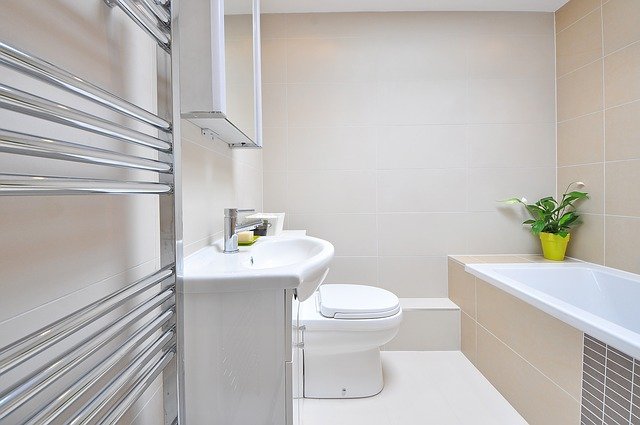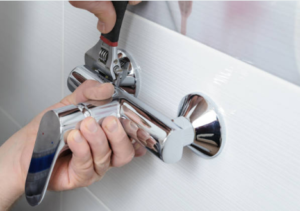The Important Aspects of a Bathroom Design

Bathrooms are not glamorous. They are, in fact, the most neglected, yet most used, room in the house. According to alvinology.com, every home needs one. However, most homeowners don’t spend enough time considering what makes a bathroom function to its full potential. In this post, here are the essential aspects to remember when designing a bathroom, whether it’s a new or renovated one.
Location
When it comes to deciding where to install a bathroom, there should be one echo that all real estate agents agree on–location, location, location. Bathrooms are often places that offer privacy. It’s important to remember that a bathroom should not be directly adjacent to or open to a very public area of the home, such as the living room. The second rule is that the bathroom should be easily accessible to all visitors, even to residents. If the only bathroom on the main level is the master bath, your guests will have to travel through your master bedroom to access it. In this regard, you might consider making a wet room or larger bathroom in the hallway. Bathrooms should be on level floors of homes, near the bedrooms. It can be dangerous to find one, especially if you are looking for one in the middle of the night.
Fixtures
 The function of the bathroom is the next important aspect. You can specify what fixtures and fittings are needed. Common fixtures include a sink, toilet, shower, and bathtub. However, you can also order special fixtures, such as a bidet. The number of bathrooms is determined by the number of fixtures and the space available. Generally, a bathroom is called a “half-bath” or “powder room” if it contains two fixtures: a sink and a toilet. A “three-quarter bath” has this basic fixture plus a shower.
The function of the bathroom is the next important aspect. You can specify what fixtures and fittings are needed. Common fixtures include a sink, toilet, shower, and bathtub. However, you can also order special fixtures, such as a bidet. The number of bathrooms is determined by the number of fixtures and the space available. Generally, a bathroom is called a “half-bath” or “powder room” if it contains two fixtures: a sink and a toilet. A “three-quarter bath” has this basic fixture plus a shower.
While a “full bathroom” has all four fixtures, a “full bath” includes a sink, toilet, shower, and bathtub. It may also have a combination tub and shower.
Size
When it comes to the size of the bathroom, comfort always plays an important role. Enough space should be provided for each accessory so that it can be used and reached easily. A space that is too large can make it difficult to use and create an uncomfortable environment. Too large a space can be uncomfortable for the user. Consider the space needed for each fixture in the bathroom. You may be surprised to learn that the room can be much smaller than you initially thought!
View
 Although the bathroom door is usually closed, there are many occasions when it can be left open. Think about what you can see through the open door. It’s nicer to see the sink than the toilet. When determining sightlines into a space, take a string or pencil and draw straight lines from one fixture to the other. This way, you will be able to determine the sightlines of a room. If the pipes go through a door or wall, the view of the faucet is clear. If there are no obstructions, the fixture can be seen.
Although the bathroom door is usually closed, there are many occasions when it can be left open. Think about what you can see through the open door. It’s nicer to see the sink than the toilet. When determining sightlines into a space, take a string or pencil and draw straight lines from one fixture to the other. This way, you will be able to determine the sightlines of a room. If the pipes go through a door or wall, the view of the faucet is clear. If there are no obstructions, the fixture can be seen.
Ventilation
Although a window may be an inexpensive and natural form of ventilation, it is not always practical to have a window in the bathroom. In these cases, a fan is essential. It is a good idea to have a fan in every room, even if there are windows. In this way, you can quickly remove unpleasant odors and prevent the accumulation of moisture, which can cause mold if not dealt with properly.
Lighting and Color
Lighting in the bathroom is important, especially for the vanity or sink. In addition to natural light, soft lighting is preferable. Avoid lights that cast shadows on your face. When it comes to colors, used in a bathroom that can affect your mood. You can opt for shades of blue and green to create a calm and serene atmosphere. Yellow is a good choice if …


